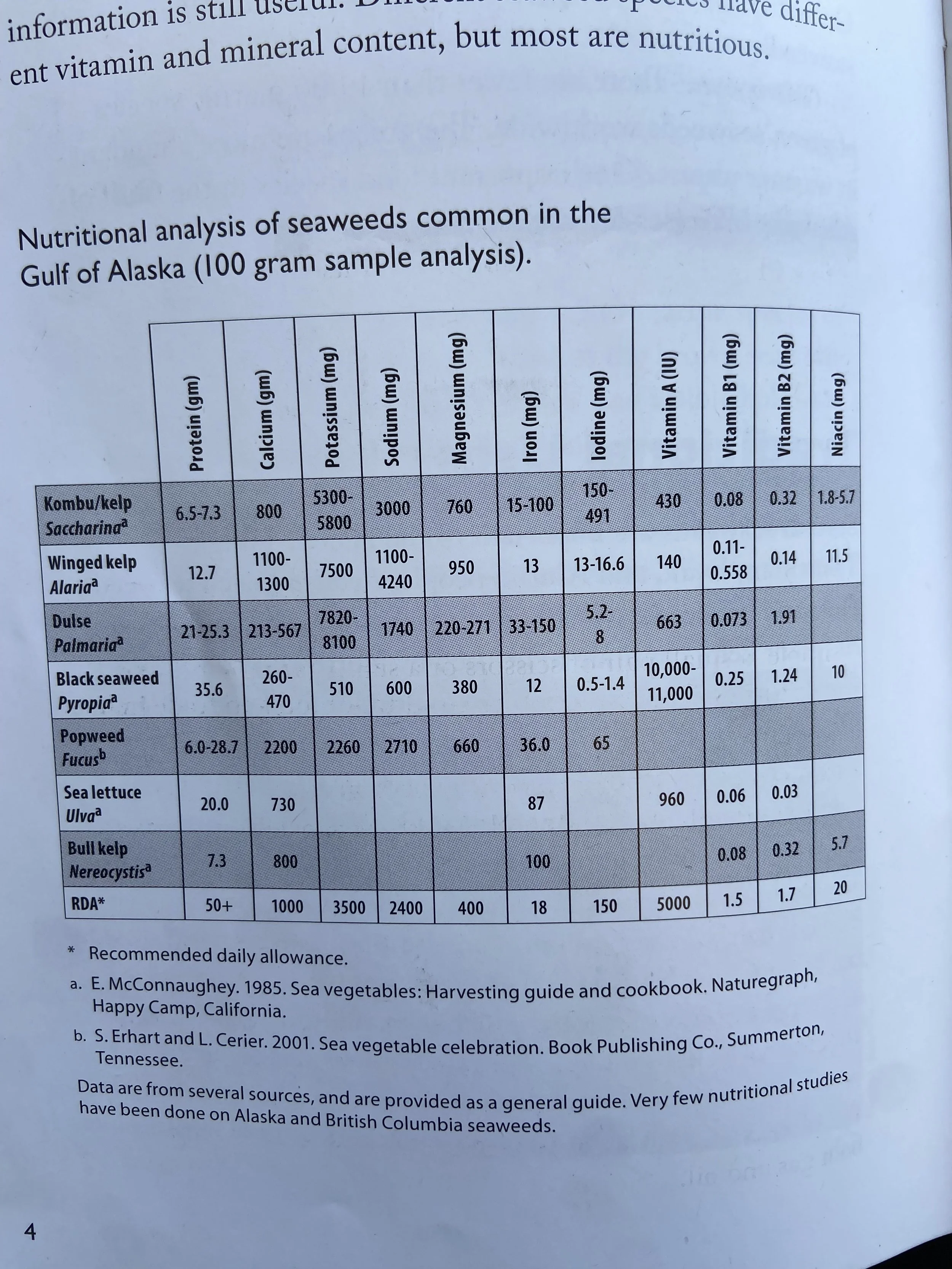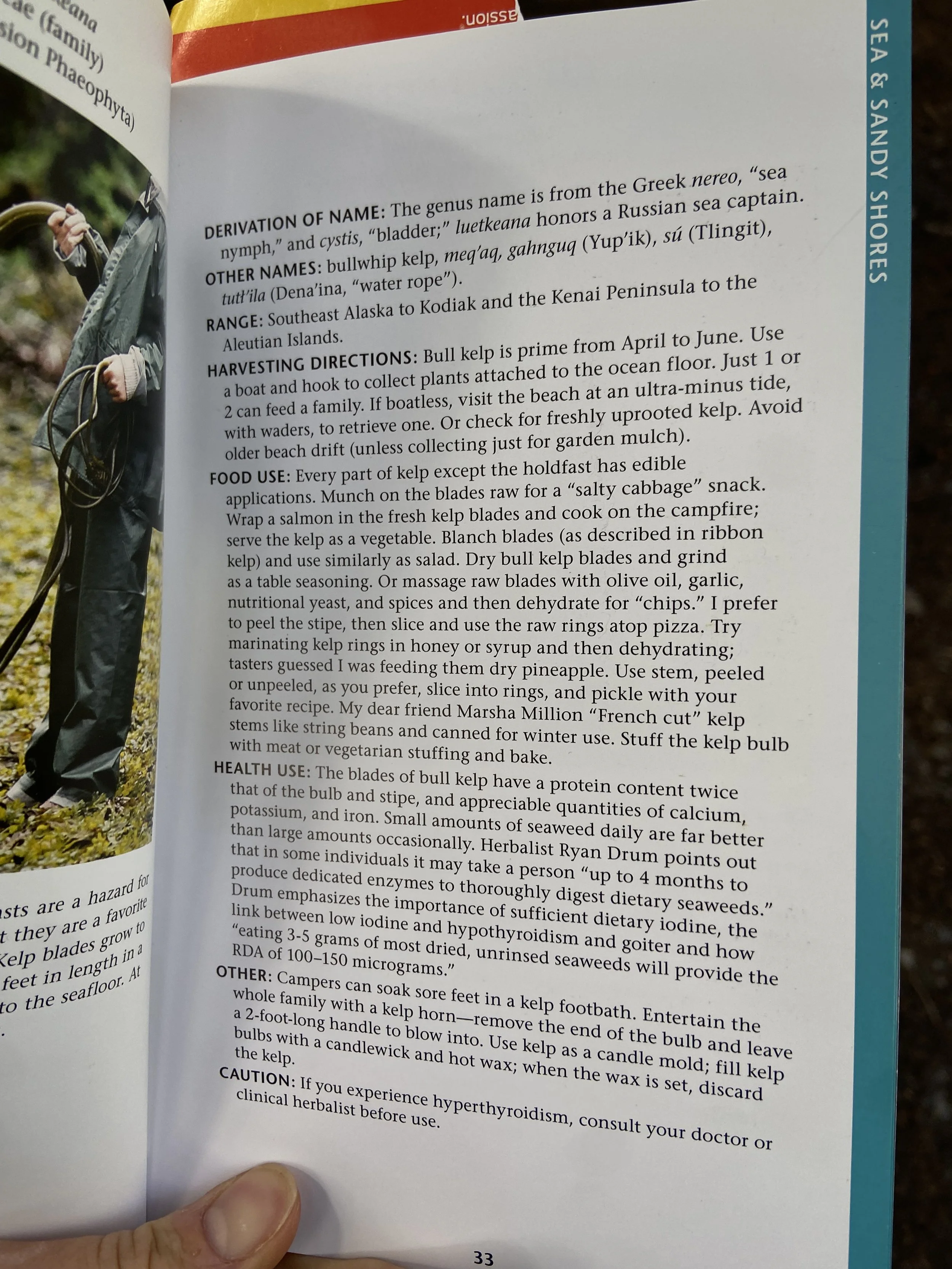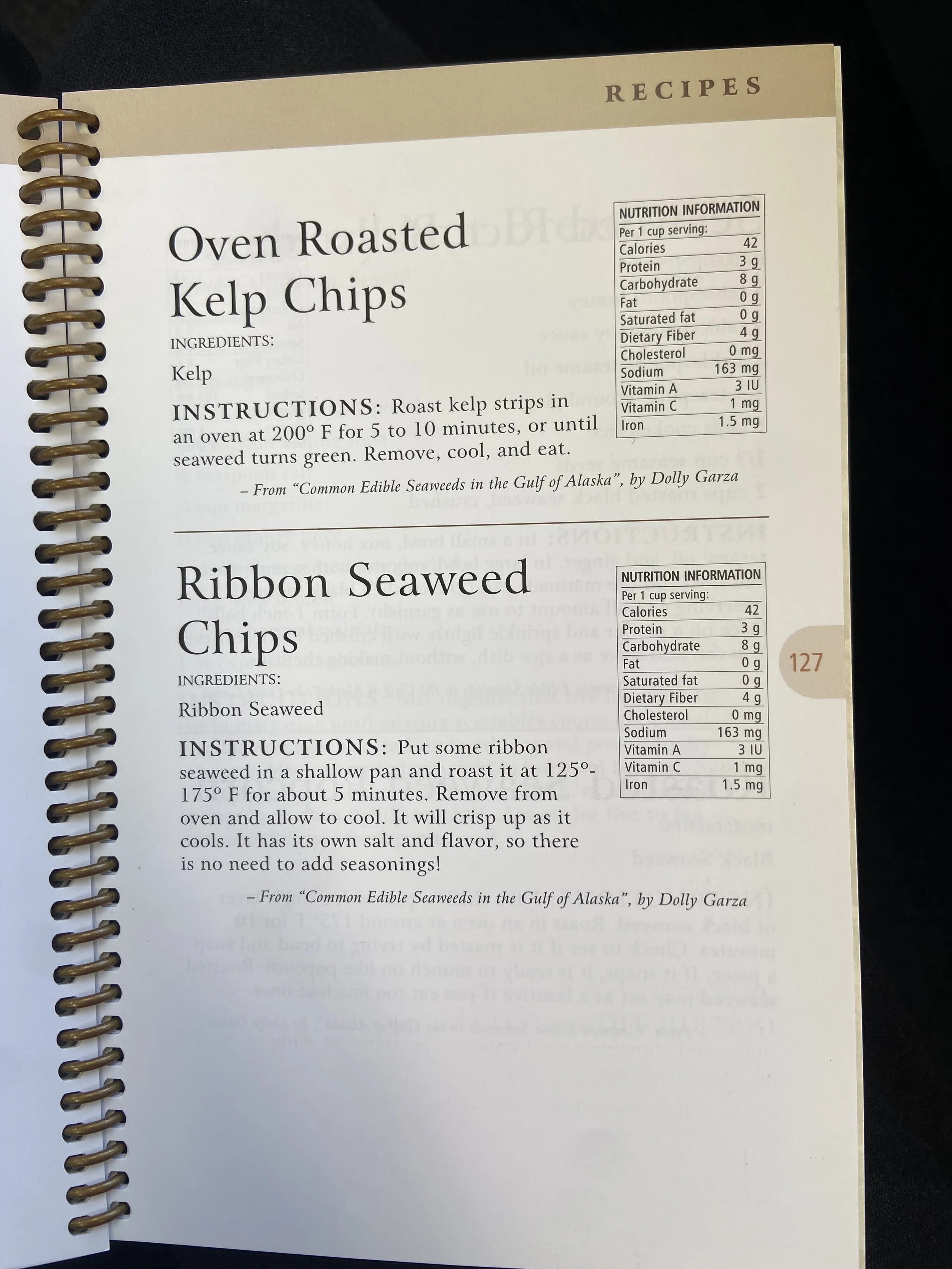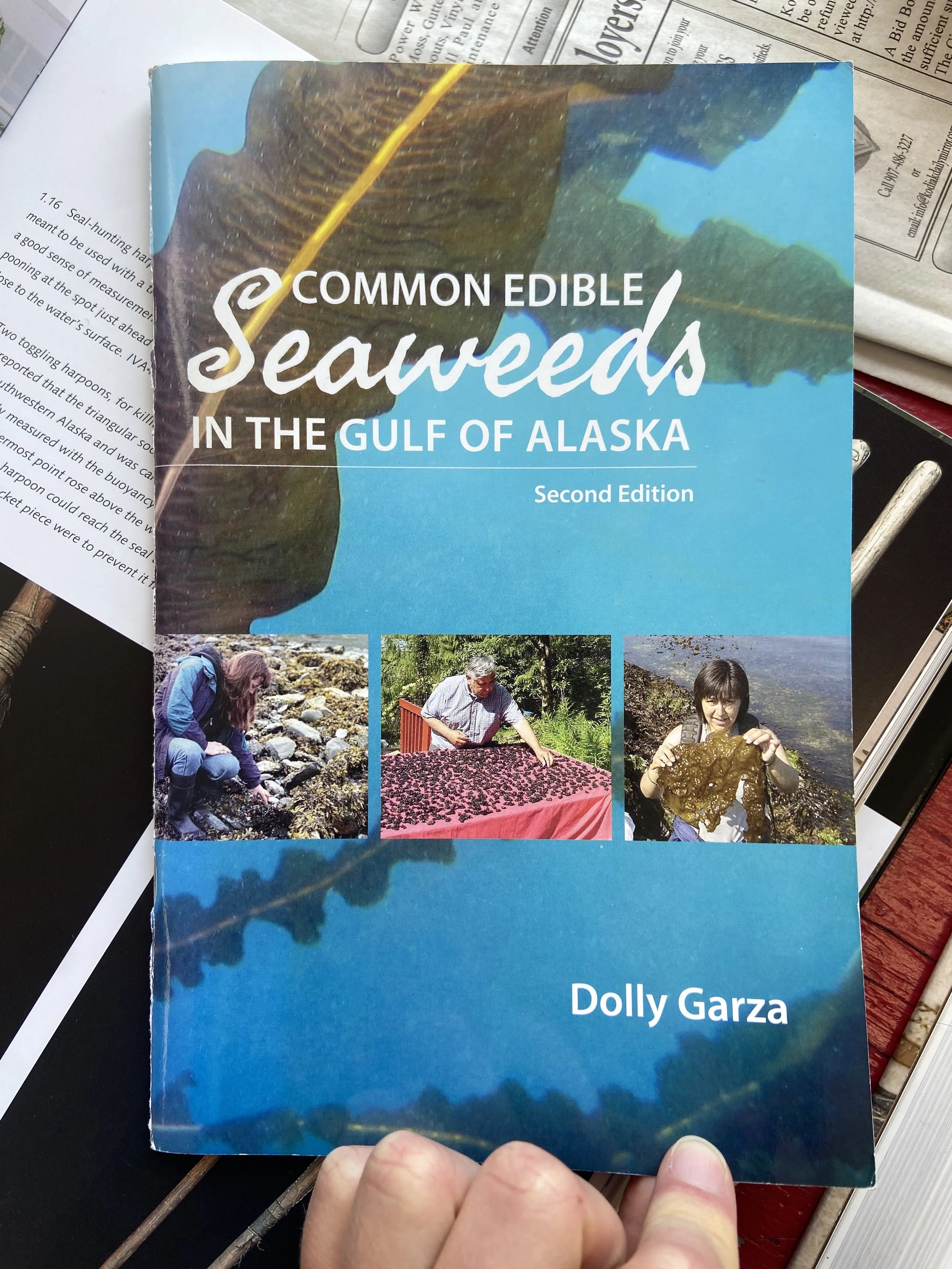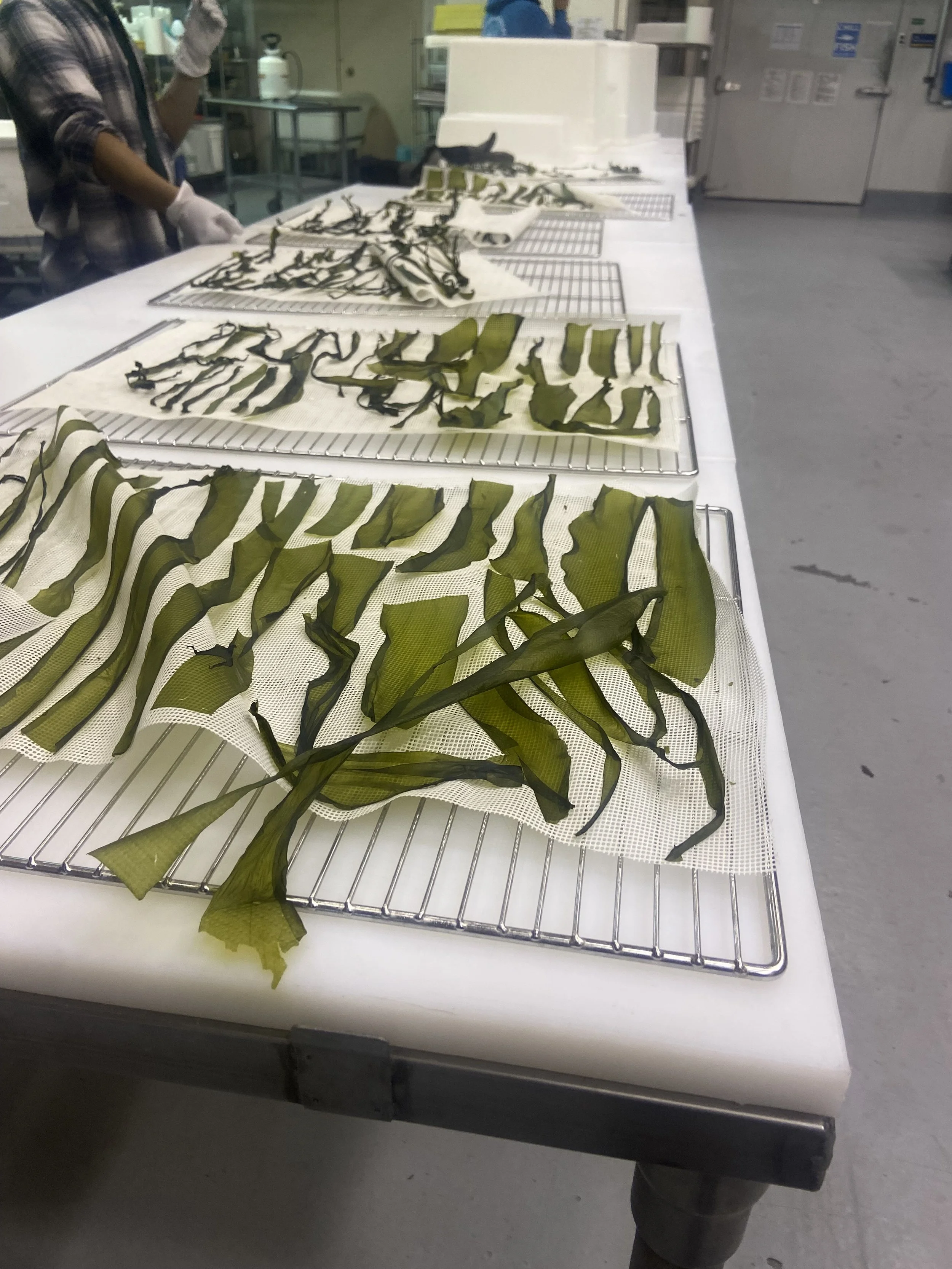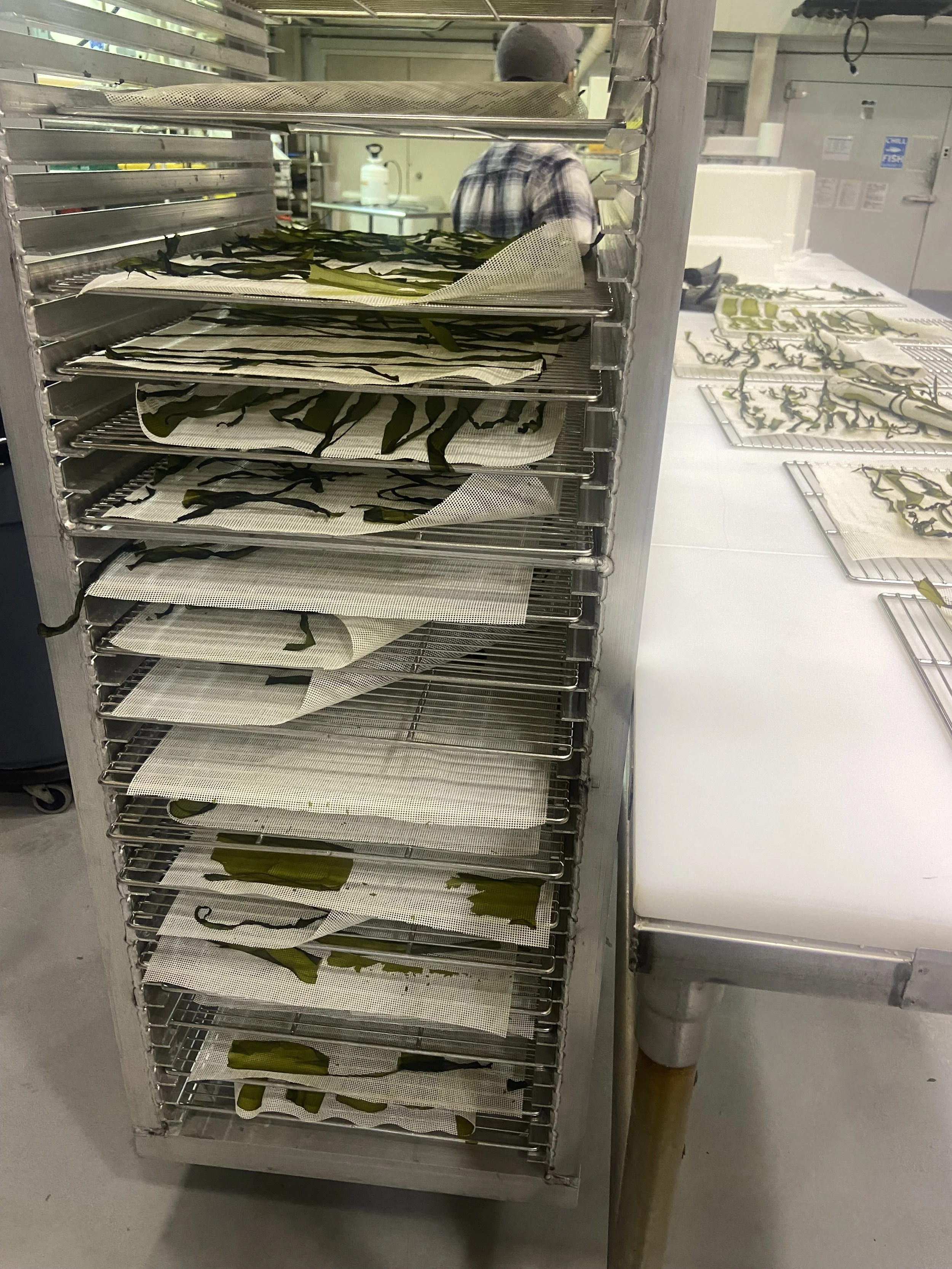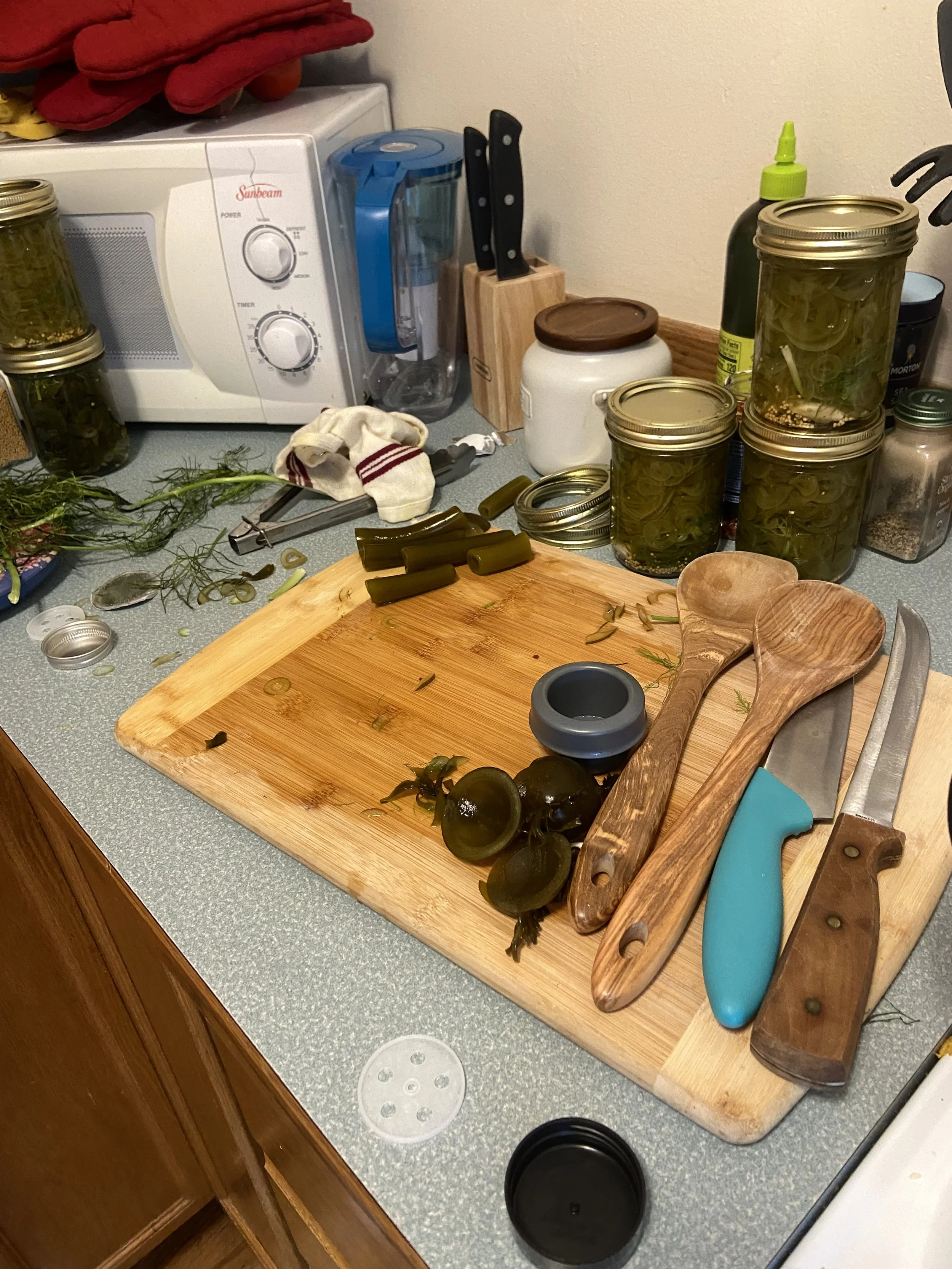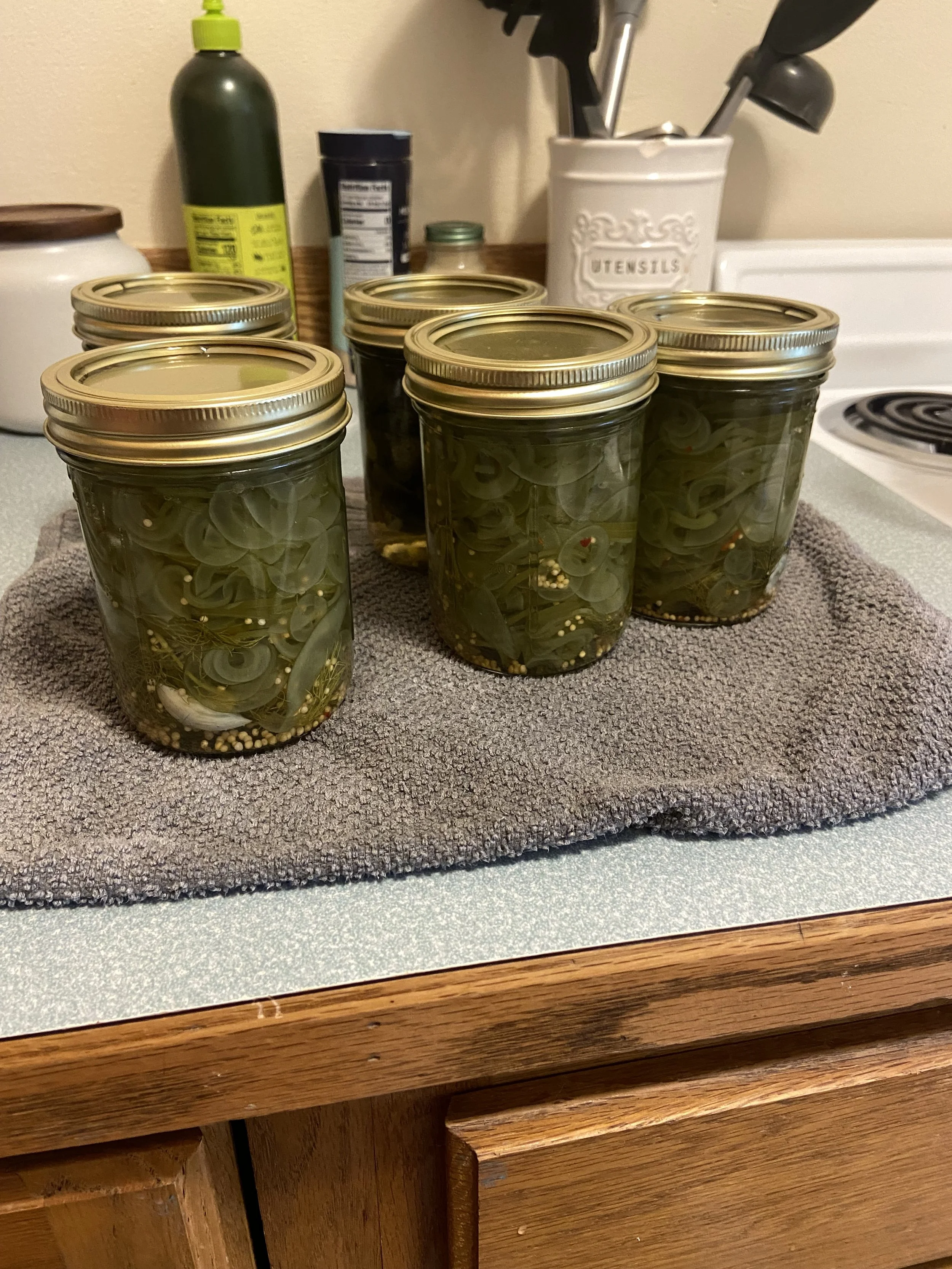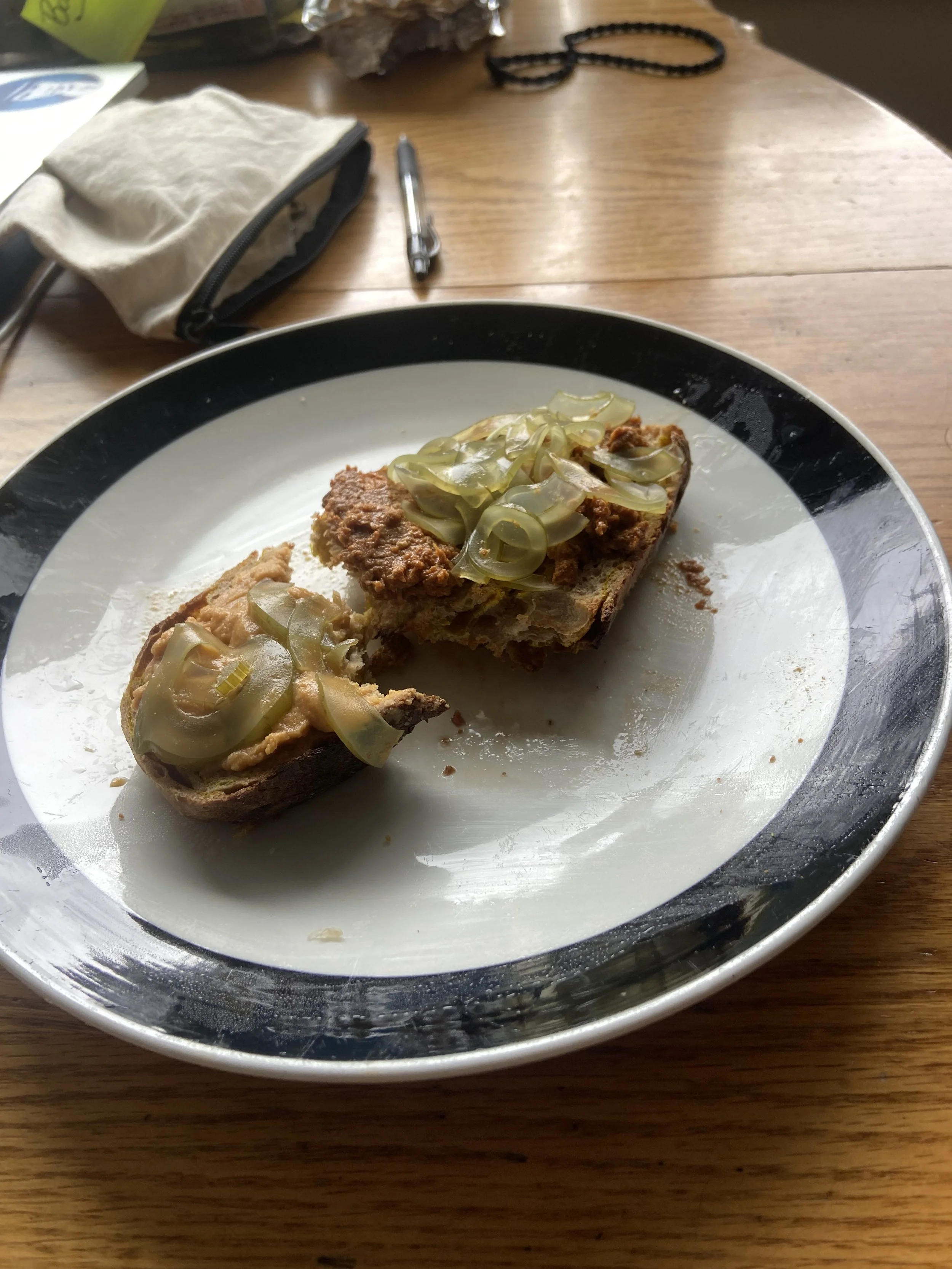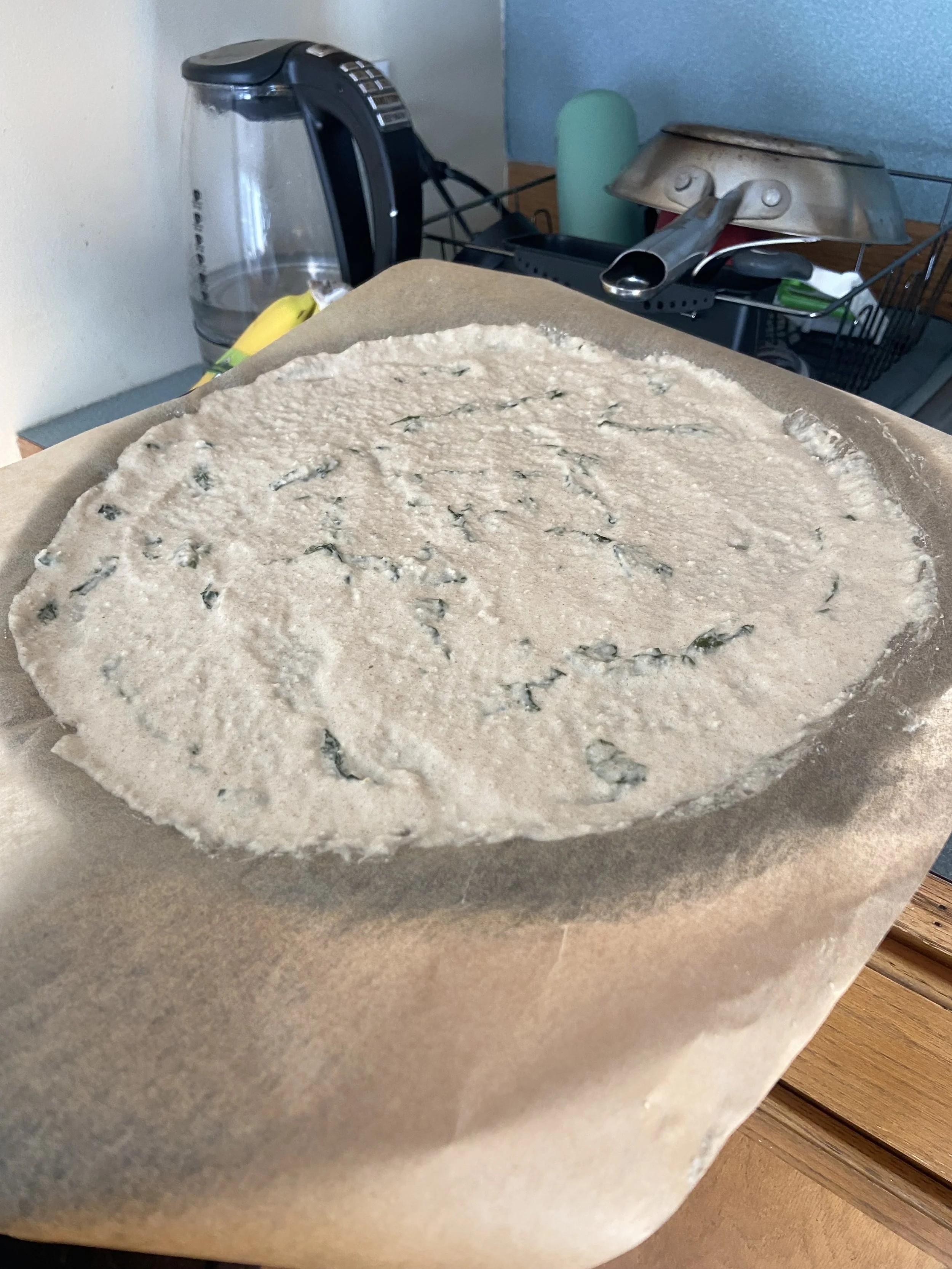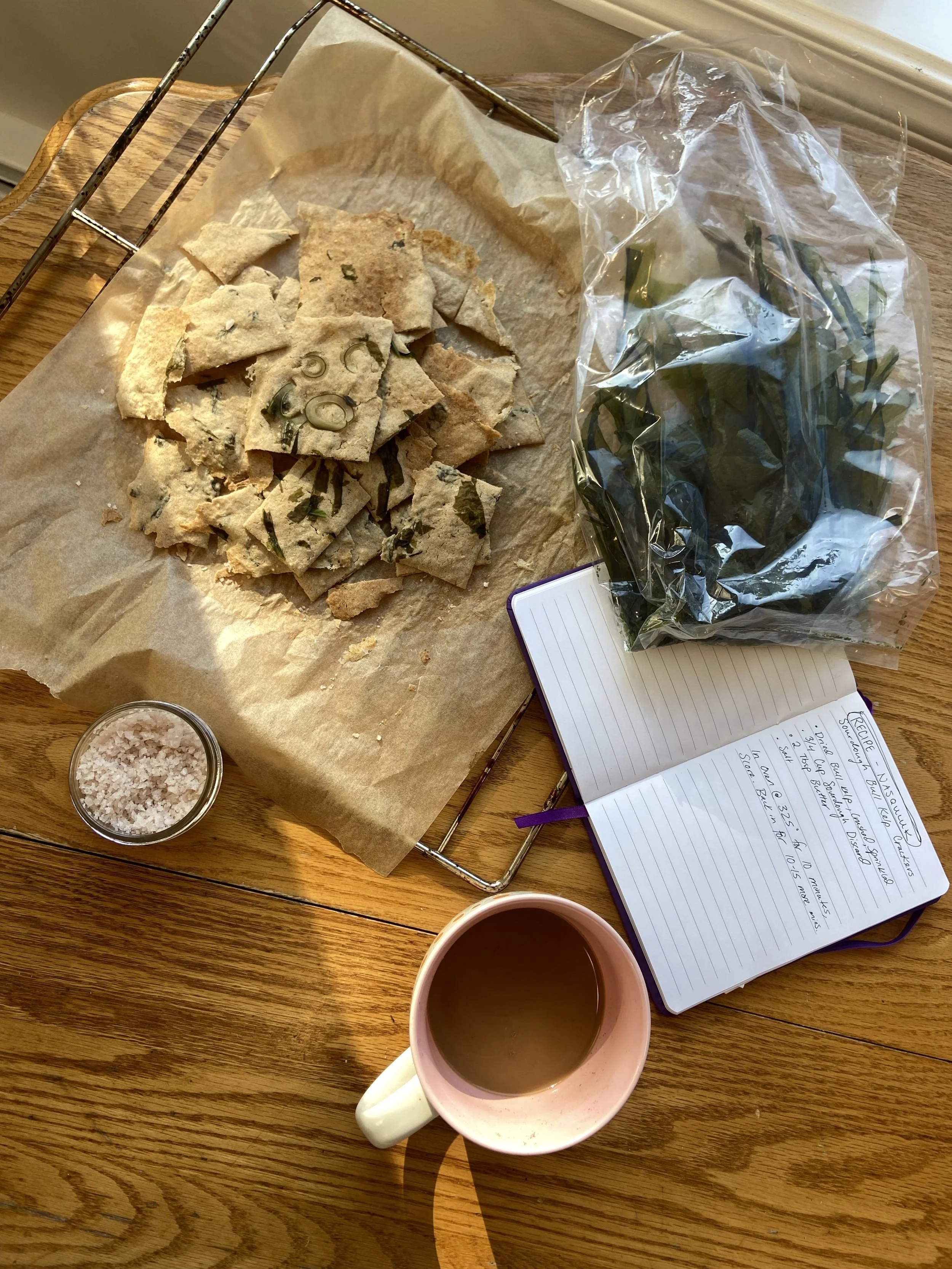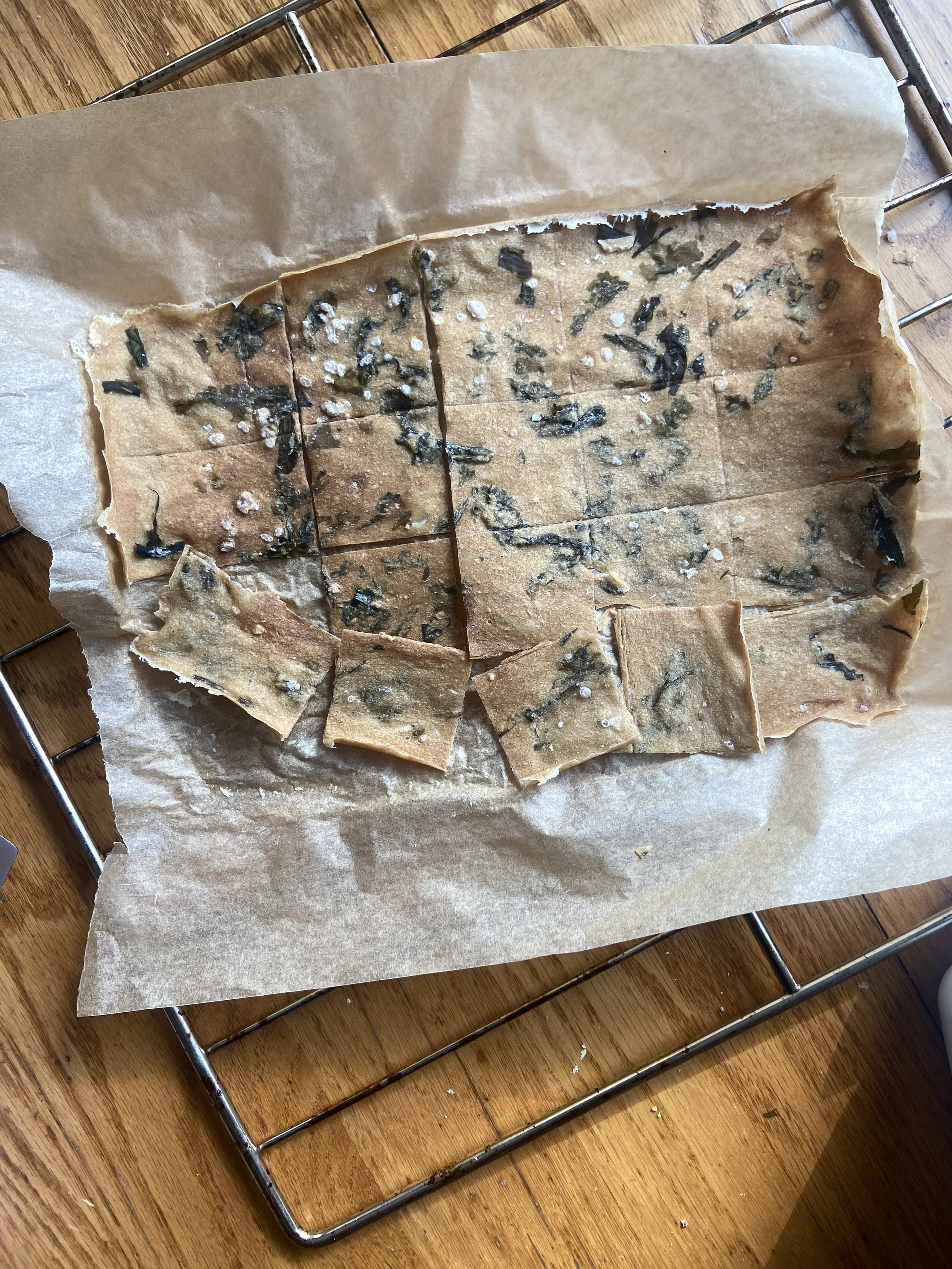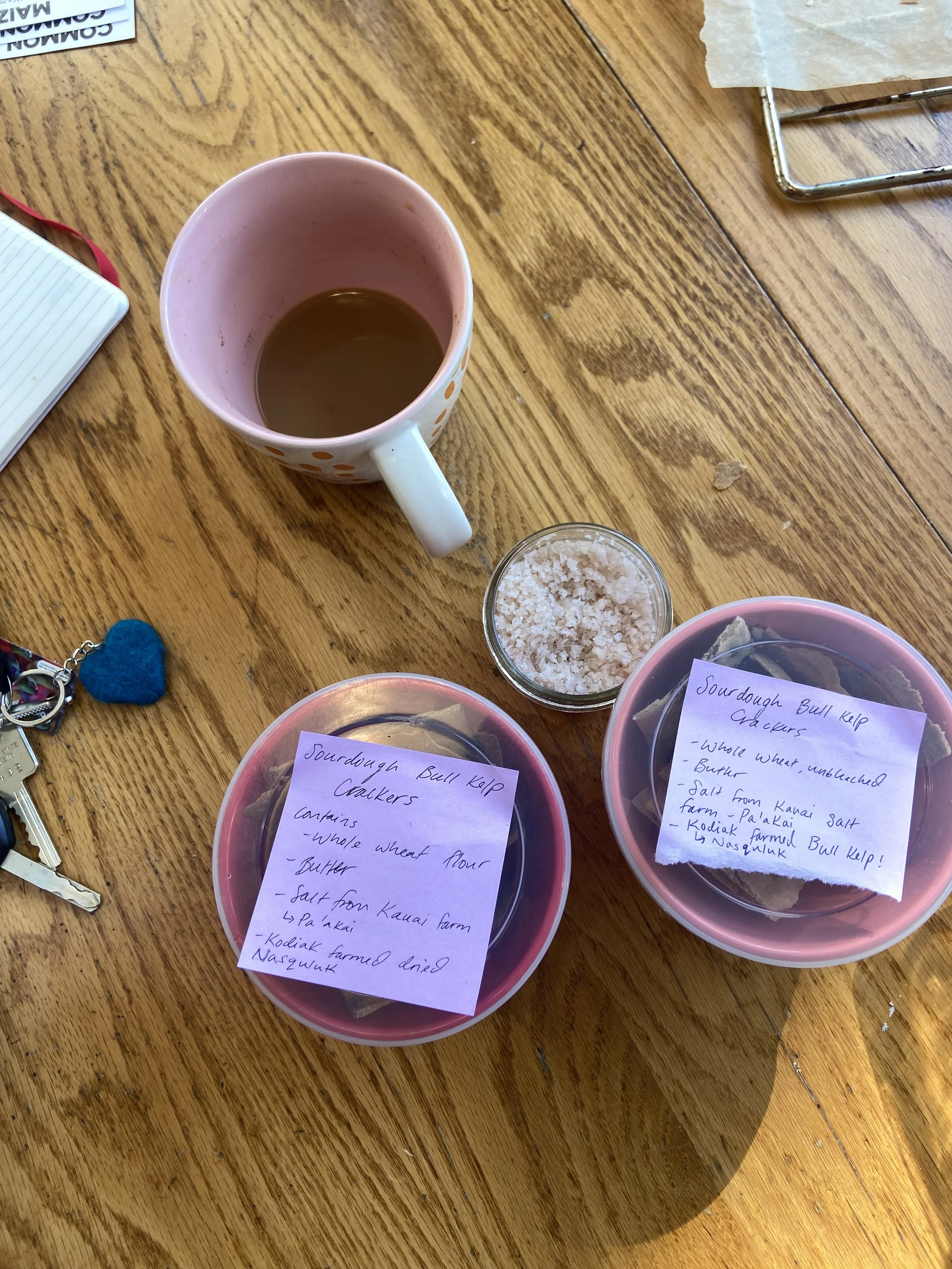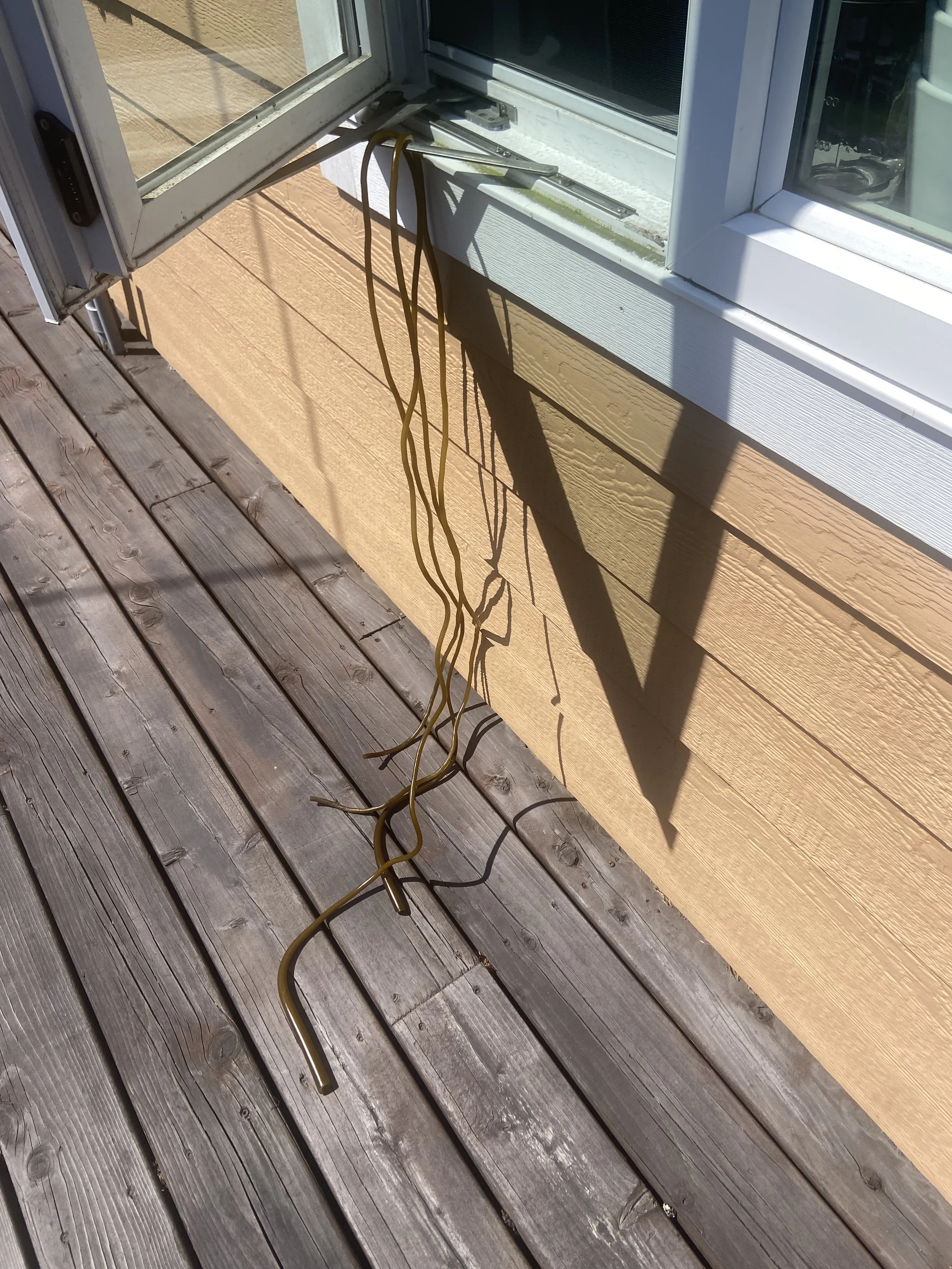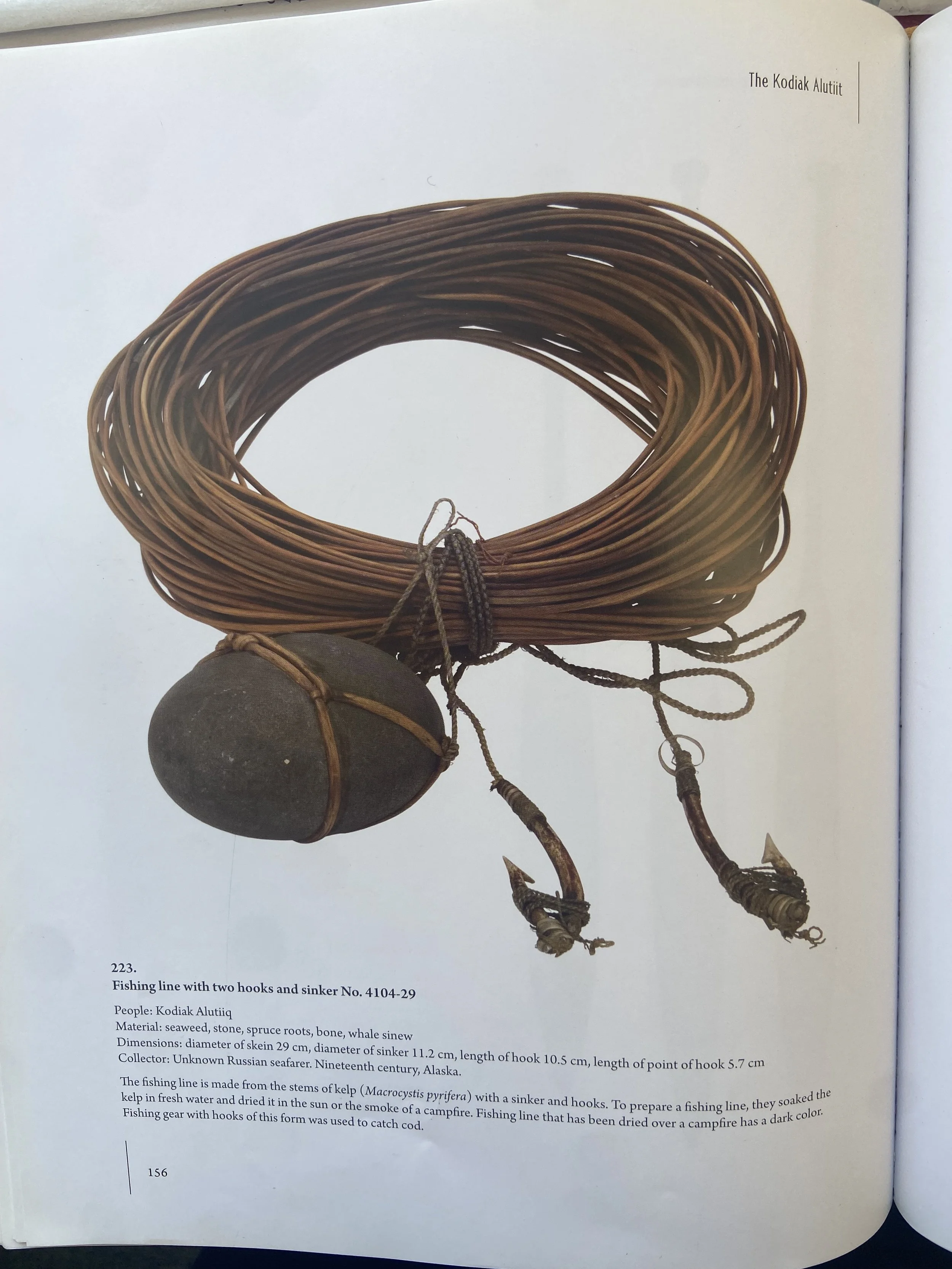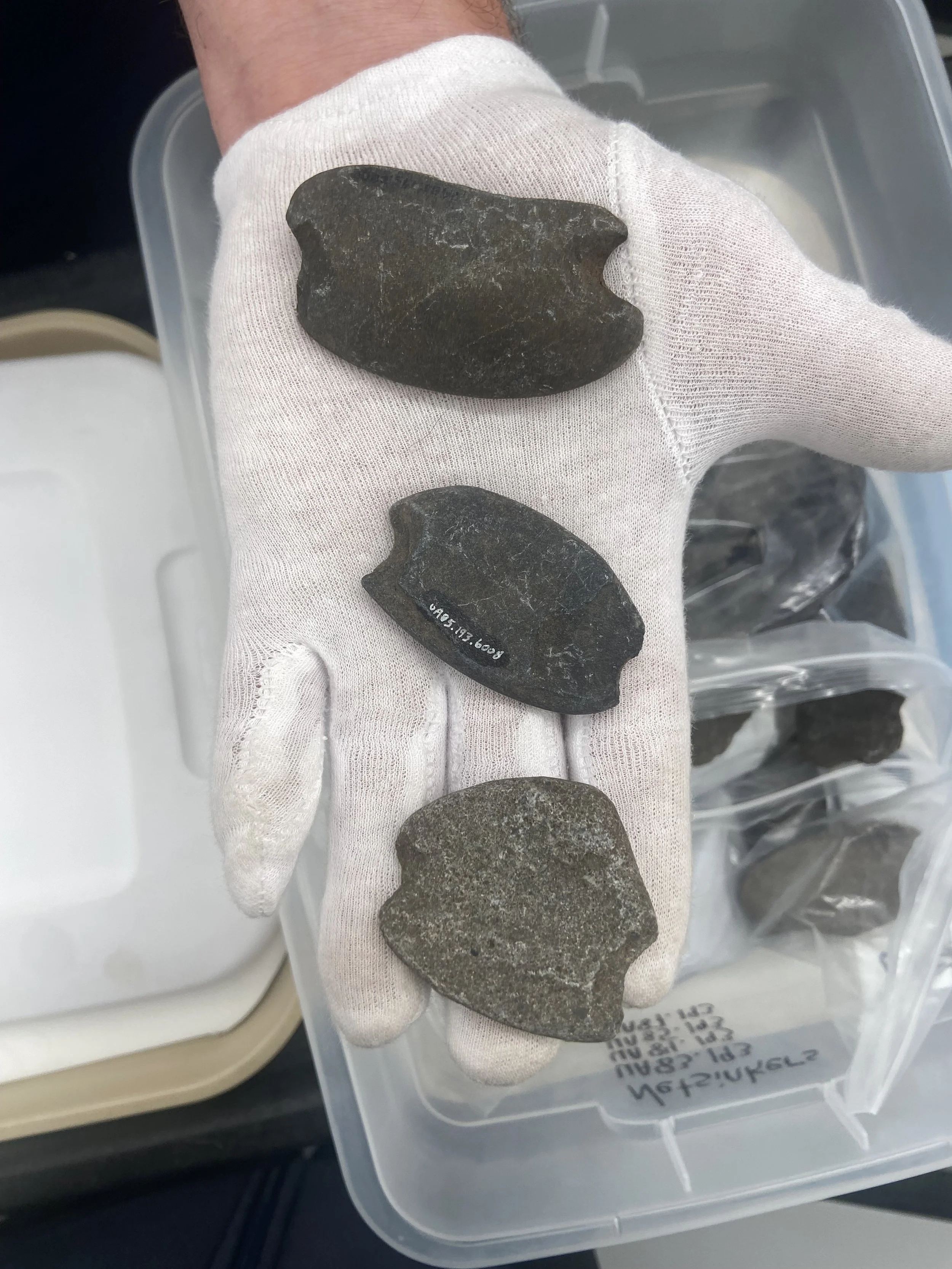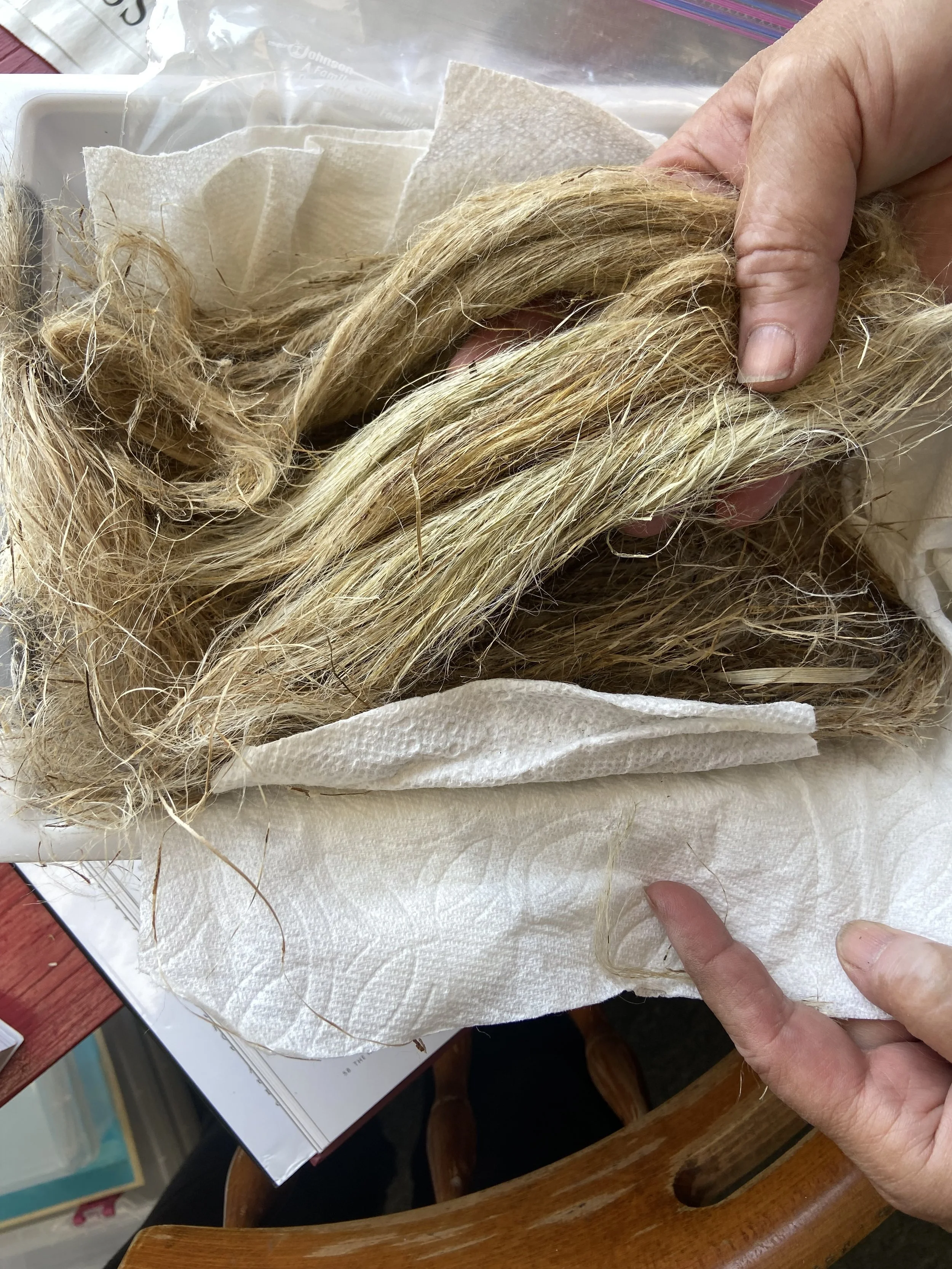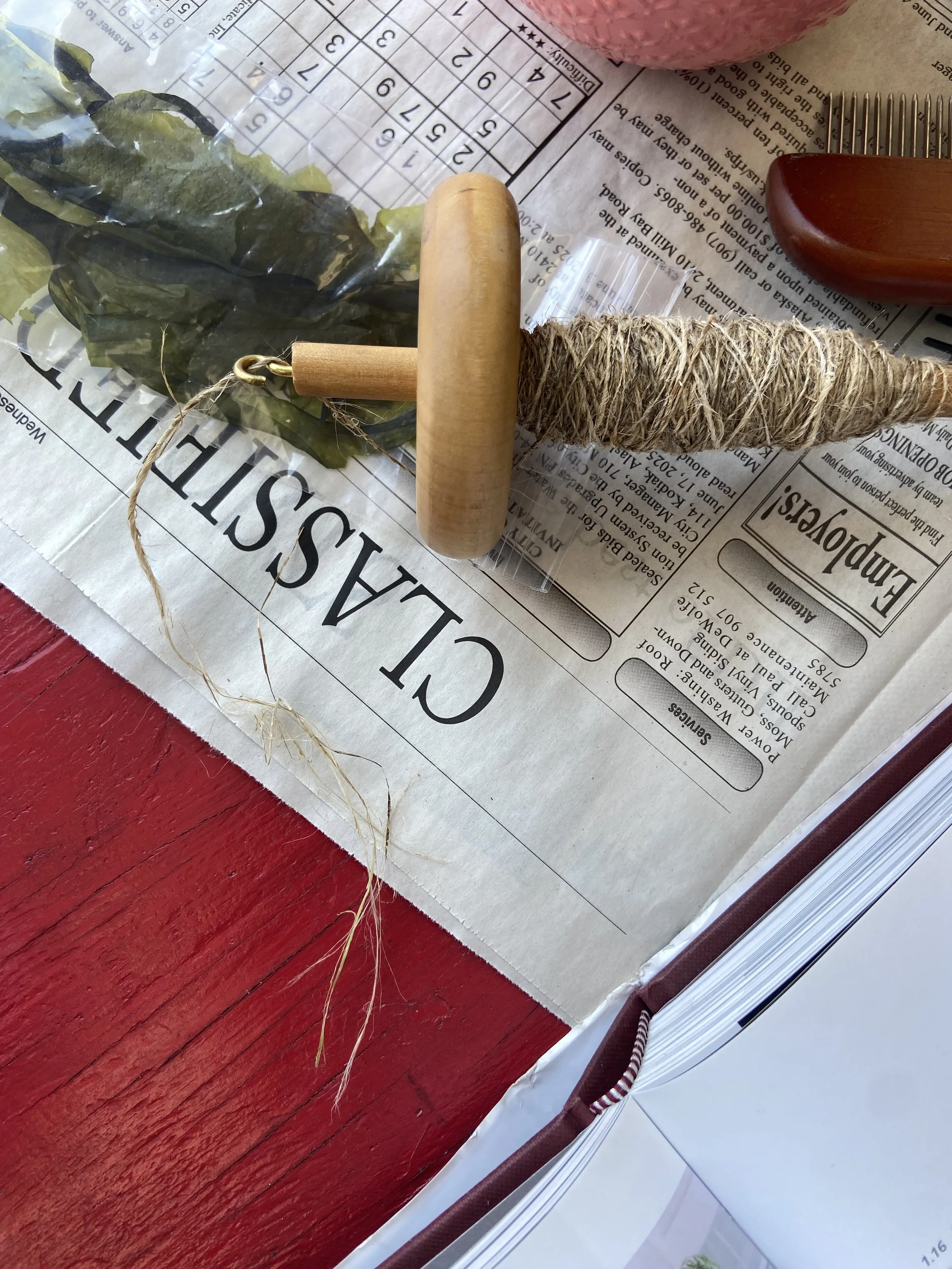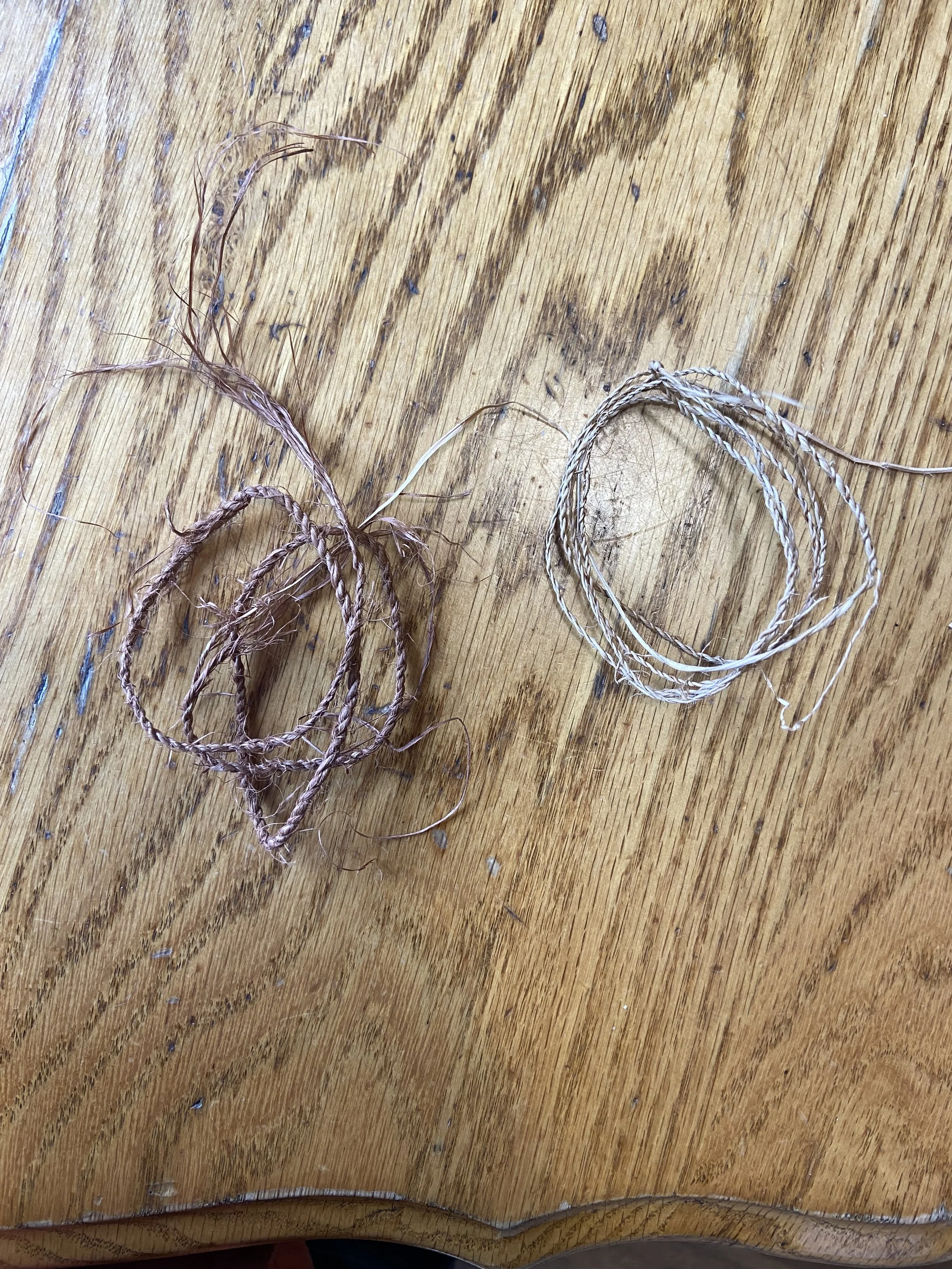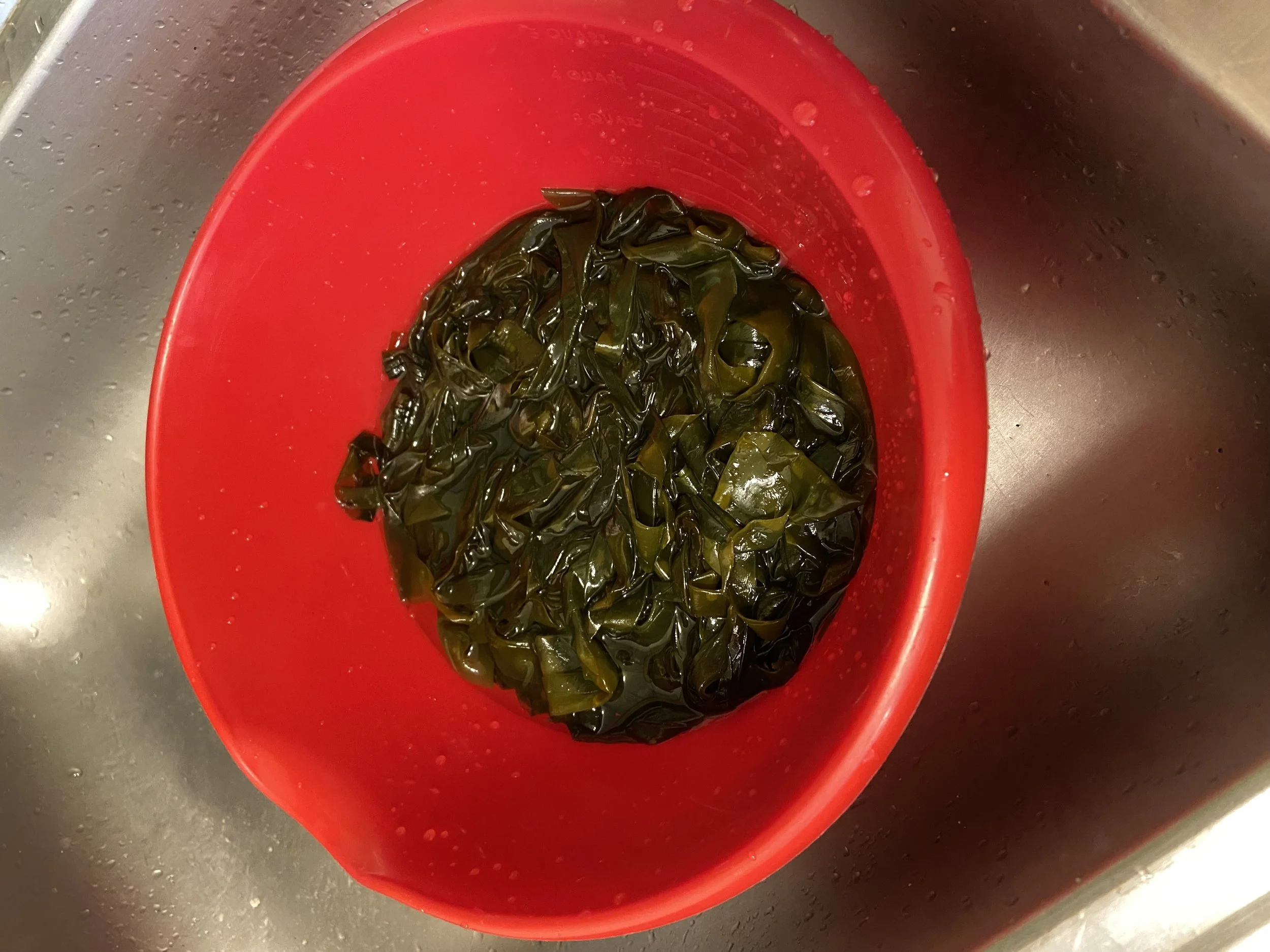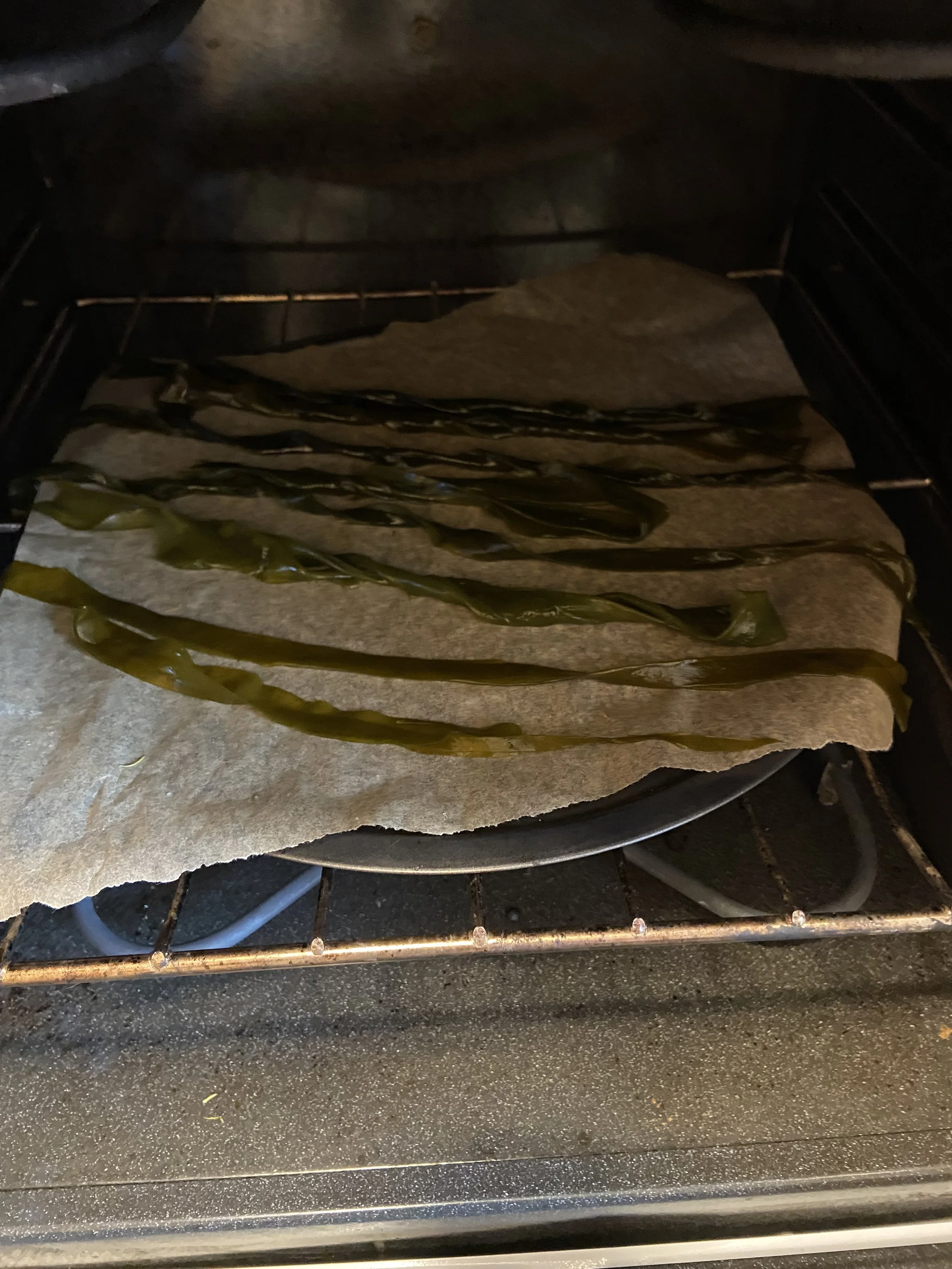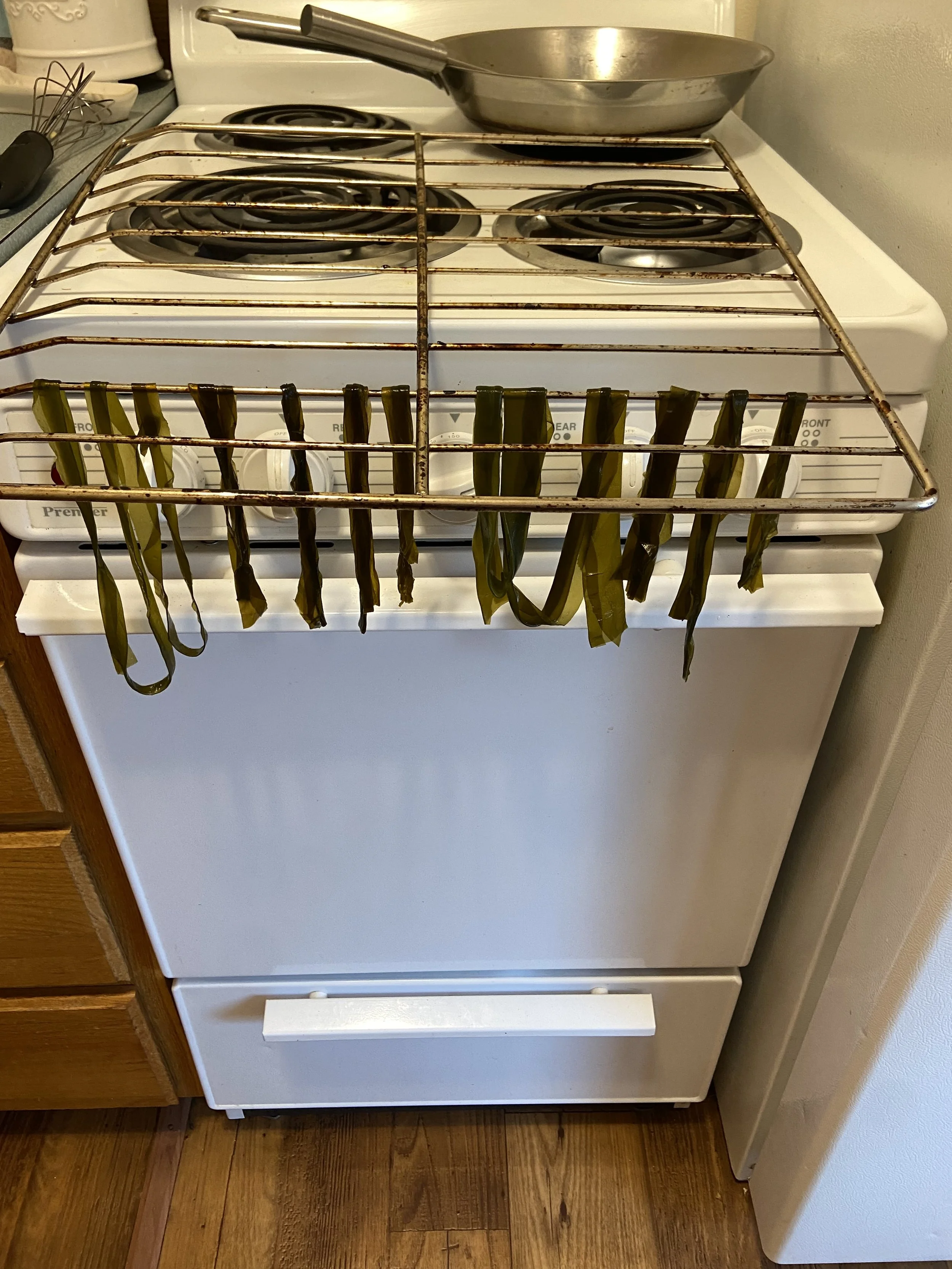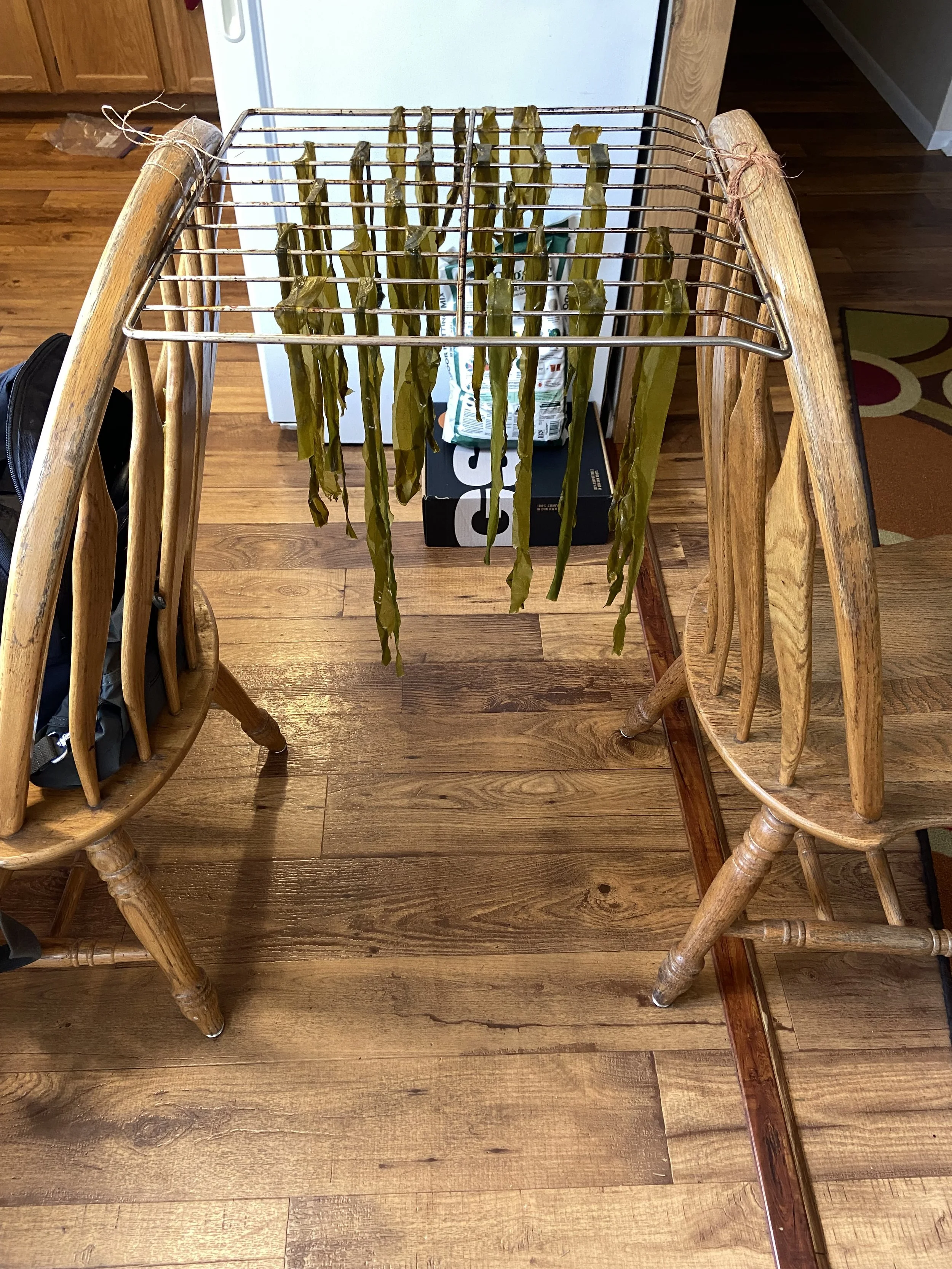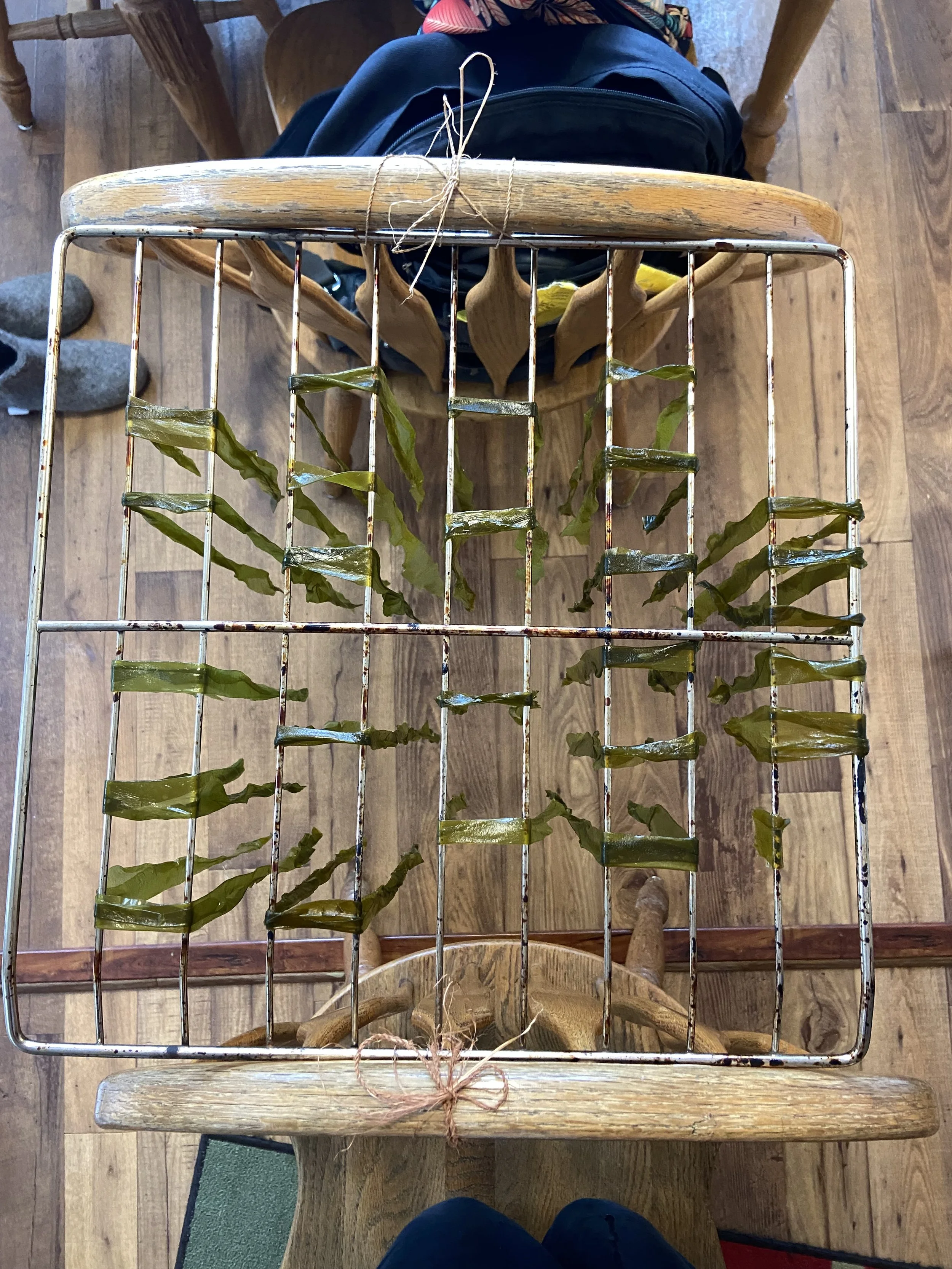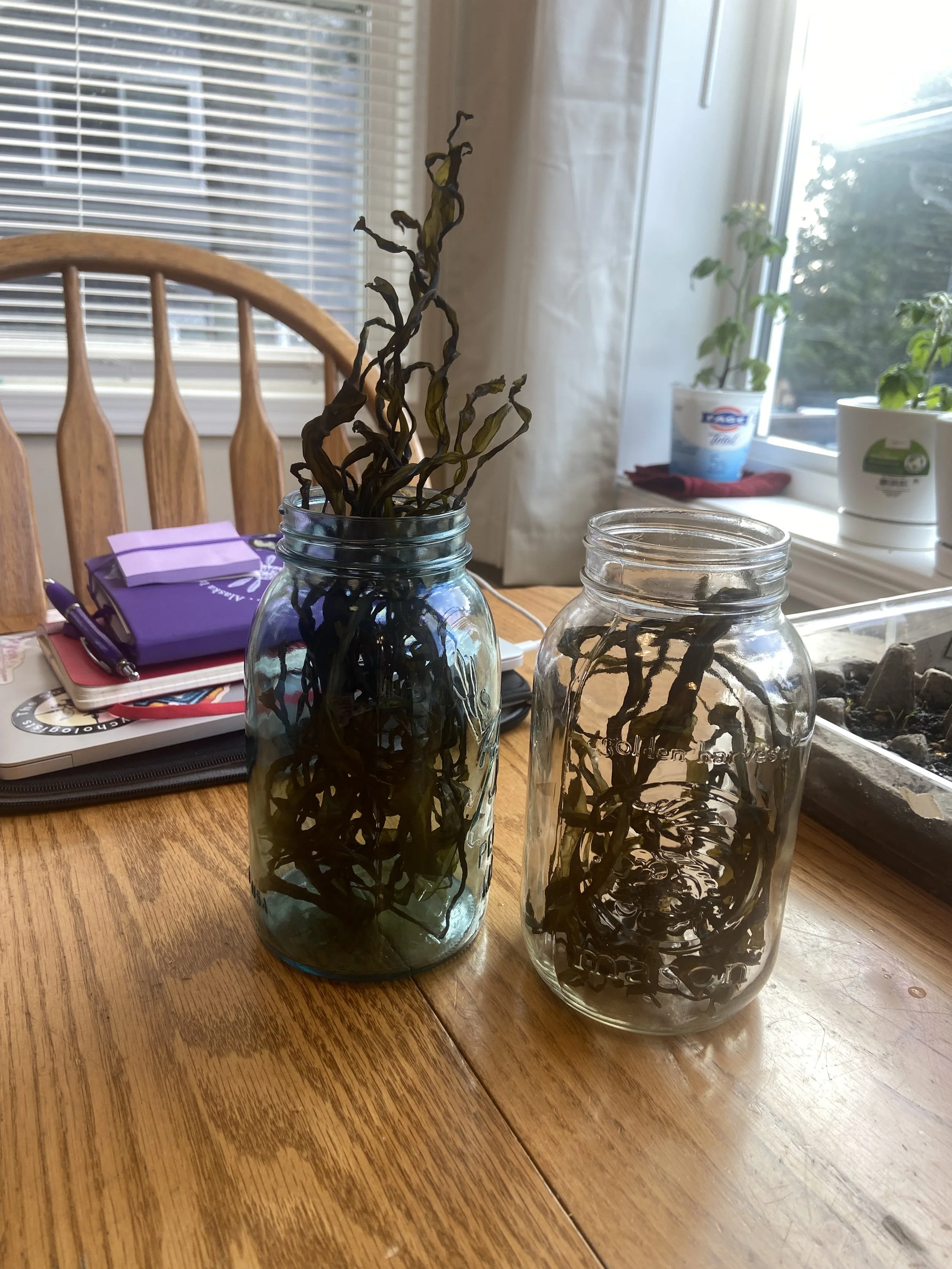Nasquluk- Bull Kelp
The first week back home in Kodiak was spent zipping around town. Letting everyone I know that I’m back in town to stay. Meeting new people. Finding a place to live. Buying things like hangers and bread flour (the essentials?). I also spent a lot of time outside, listening to the waves crash on the shore, smelling the smell of this island that has always smelled like home to me. Seeing the trees and green, which are a shock after being on the plains. Tasting things like fresh spruce tips, fiddleheads, fresh fish, fireweed shoots, and many other abundant foraging plants that are coming up in the Kodiak spring.
The first plant relative I really got acquainted with was the Nasquluk- The Bull Kelp. I made friends with some of the researchers here on island that are working on determining favorable conditions for farming bull kelp. Bull Kelp is full of nutrients, fiber, and even protein. See some nutrition facts that I found in a seaweed book down below.
I learned about the nasquluk and also took part in some kelp processing, since the researchers had harvested a bunch of nasquluk but couldn’t sell it because of permitting. So we dehydrated a bunch in the processing facility and I took home a lot more fresh nasquluk. Three bags of stipe, bulb, and blades! So I had to get creative with what to do with it all.
I tried pickling the stipe and bulbs. Cutting them super thin with a Mandolin tool and using a super basic brine, like this one: https://alutiiqmuseum.org/wp-content/uploads/2023/12/Pickled_Kelp_Instructions.pdf
I didn’t use any sugar with mine. I sort of wish I had used a little, to balance the vinegar. But I forgot to buy some and wanted to try without. I made mine with some fresh fennel. I got five jars of pickled bull kelp stipe out of that harvest and felt so proud! I’ve been taking a jar everywhere with me and making friends and unsuspecting neighbors try them. And I like eating them with my hummus or tuna fish sourdough toasts!
The next experiment I did was with some of the dried kelp that I took home. It’s just like those sheets of seaweed paper that you can get from the store for like $12 a pack. I use those with leftover salmon, like mini sushi rolls. But I’ve never baked anything with seaweed. I was curious how it might turn out in some bread but then thought I could make some sourdough nasquluk crackers! They are SUPER easy. If you are into sourdough baking at all (let me know if not, I’m happy to teach!) there is some leftover “discard” sourdough starter when you make bread or feed your starter. You take that discard, mix it with butter and nasquluk.. and Whoila! fresh crackers with a little extra salty flavor. Pretty yummy!!
I made a bunch and have been giving them to people to try! I also traded some for some Pillar Mountain Pierogi, which were also made with kelp!
Excited to perfect this recipe because they are so easy and delicious. I did try to put some of the pickled kelp on the top of one corner and it didn’t work so well, kind of just made the cracker soggy. Back to the drawing board on that one.
I also brought home the nasquluk stipe, about six long ropes. Of course, that’s what I thought when I saw them: rope. I wondered what traditional uses there were for nasquluk stipe. I remember reading on the Alutiiq museum website about the nasquluk being used as ropes and nets: https://alutiiqmuseum.org/alutiiq-people/subsistence/plant-gallery/bull-kelp/
“ Material: Hollow sections of bull kelp stipe can be used to siphon water from boats. Thinner parts of the stipe were once used for fishing line, net making, and as rope for securing boats and climbing on cliffs. The stem also served as a whip. The bulb serves as a target in the bow and arrow game ruuwarluni, and pieces of bull kelp are ammunition for children’s popguns. Bull kelp is also a garden fertilizer.”
I dried the stipe for half a sunny day after soaking it in fresh water. And now I’ve got it stored in some oil. Not sure really what I’m doing with it. But it’s sent me off on a net tangent- I want to make a nasquluk fishing line or net! So much so that I even went to the museum to look at what sort of nets have been recovered from archaeological dig sites around the island. I also went down to Coral Chernoff’s shop, down by the harbor, to ask if she’d ever made nasquluk net before. She says she’s not sure that nasquluk was used as netting but we did make some cordage out of yellow cedar and willow bark (pictured below, along with some of the cordage she’s already made out of nettles)! I also took a look at the net sinkers at the Alutiiq Museum, proof of larger nets- gill nets. It really would take a long time to make a whole gill net out of cordage. Is that what they used? If not, what? Is is possible to make a gill net out of nasquluk?
So if anyone knows anything about using stipe for line or netting, let me know.
My last big push with this round of nasquluk was the rest of the blades, I had probably a couple pounds of fresh blades to try to process without access to a big dehydrator. I dried a bunch in the oven. Here are some observations:
Industrial Dehydrator notes We found that spreading the blades flat and putting them in the dehydrator did not work. The blades stuck to the sheet and didn’t come off. So the best way to do it in the dehydrator is to leave the blades sort of furled/twisted and put them in the dehydrator at 150 degrees for 4 hours.
Oven at home laying the blades out on parchment paper on a cookie sheet and hanging them on the oven rack (see below) worked. I dried these about the same time as in the dehydrator. Put them in at the lowest temp my oven can go (150) and left the door propped open to let out any steam. And left them until dry and crispy- about 3-4hrs.
Air dry I wanted to see how trad (traditional :) I could do it, so I also air-dried a bunch. That cordage I just made with Coral came in use real fast to tie my oven rack in between two chairs haha. I left them hanging like that for about 2 days but they were dry sooner.
ONTO THE FOOD ALREADY!
I’ve made some pretty yummy things with all this nasquluk already. I think I’ll do a whole post on what I’ve made so far.
RESOURCES
https://alutiiqmuseum.org/alutiiq-people/subsistence/plant-gallery/bull-kelp/
https://www.uaf.edu/ces/publications/database/food/files/pdfs/FNH-00131_Bullwhip_Kelp_small.pdf
